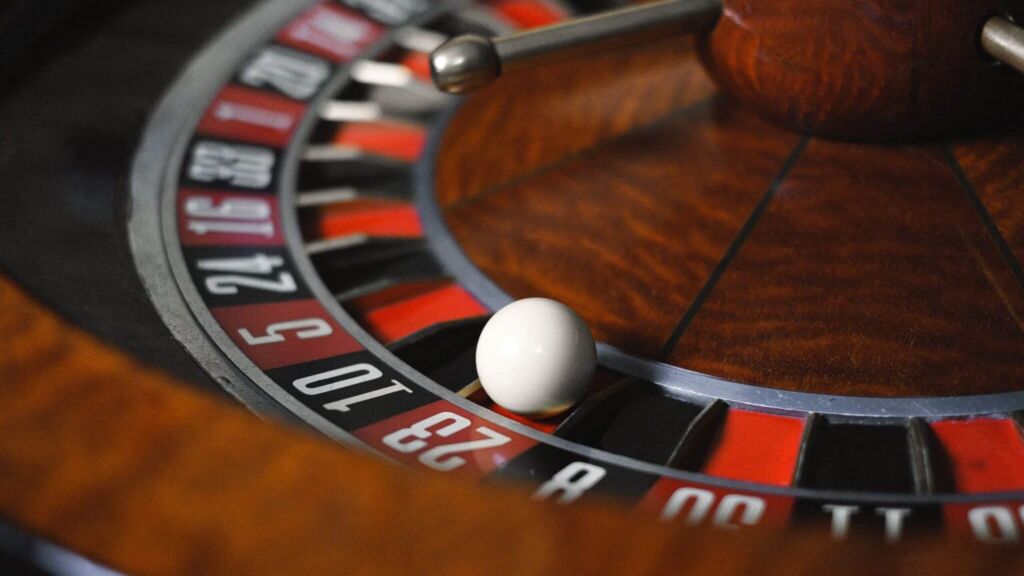Stepping into the fascinating roulette landscape can be both exhilarating and nerve-wracking for beginners eager to explore key strategies to improve their game experience and grasp this iconic gambling activity.
Getting to Know Roulette's Fundamentals
Originating from France, roulette is a captivating game centered around a rotating wheel with a small ball. The wheel sports numbers from 1 to 36 in alternating red and black colors, plus one or two green zeros. Participants place bets on the potential landing spot of the ball once the spinning ceases. The game's draw comes from its straightforwardness intertwined with the anticipation of each spin, blending luck and strategic elements that capture the interest of players globally.
European vs. American Roulette: A Breakdown
European and American are the predominant roulette styles. The main distinction lies in the wheel configuration. A European roulette wheel contains 37 compartments, ranging from 1 to 36, plus a solitary zero. Conversely, the American variant has 38, comprising 1 to 36, a single zero, and an added double zero. This divergence notably affects the probability, with the double zero heightening the house advantage in American roulette, making European roulette more advantageous for gamblers due to its reduced house edge, which hovers around 2.7%, compared to the 5.26% of its American counterpart.
Roulette Table Configuration and Betting Choices
A roulette table is segmented into two primary areas: the inside and the outside sections. The inside section is dedicated to direct number wagers on the grid, offering higher returns but with slimmer odds. These include:
- Straight Up: A bet on a lone number, with a payoff of 35 to 1.
- Split Bet: A bet placed on a pair of neighboring numbers, with a payoff of 17 to 1.
- Street Bet: A wager covering a trio of numbers aligned in a row, with a payoff of 11 to 1.
- Corner Bet: A wager on four numbers forming a square, with a payoff of 8 to 1.
- Line Bet: Betting on six numbers dispersed in two neighboring rows has a payoff of 5 to 1.
The outside segment provides bets with higher probabilities but lower returns, such as:
- Color Bets (Red or Black): Betting is based on color choice among numbers, with a 1 to 1 payoff.
- Odd or Even Bets: Betting is based on whether numbers are odd or even, with a 1 to 1 payoff.
- High or Low Bets: Betting on the group of numbers 1-18 for low or 19-36 for high, with a 1 to 1 payoff.
- Column Bets: Wagering on one of the three columns comprising 12 numbers, with a 2 to 1 payoff.
- Dozen Bets: Wagering on the first (1-12), second (13-24), or third (25-36) batch of 12 numbers, with a 2 to 1 payoff.
Comprehending Roulette Odds and Returns
Being knowledgeable about roulette odds and returns is vital for strategy implementation. In roulette, odds pivot on the wheel's slot count and the specific bet. For instance, a straight-up wager in European roulette holds a probability of 1 in 37, yet the reward stands at 35 to 1. This discrepancy manifests the house advantage. While outside bets yield better winning probabilities, their rewards are modest, striking a risk-reward equilibrium. For example, a red/black wager has nearly a 50% success chance, though slightly lower due to the green zero, and promises a 1 to 1 return.
Roulette Strategies for Newcomers: Balancing Risks and Hopes
For novices, a roulette approach is more about effective bankroll management and gaining a grasp on the game's nature rather than ensuring victories. It’s pivotal to view roulette as a fun activity, all while being aware of the built-in risks. Although no strategy can counteract the house advantage over extended periods, some methods can provide a more organized playing routine and potentially prolong gameplay time.
Complementing Simplicity with Stability: Flat Betting
Flat betting, perfect for beginners, emphasizes placing identical bets on the same type each round. For instance, consistently wagering $5 on red each spin. This simple and effortless method aids in expenditure control. While conservative, flat betting steers clear of rapid gains but also moderates steep losses, ideal for players who value extended play sessions and a steady gambling rhythm.
Martingale Technique: A Cautious Pursuit of Losses
One of the most renowned roulette methods is the Martingale technique, focused on doubling bets post-loss to cover past losses and secure an initial wager’s profit. Commencing with a base sum such as $5 on red, increasing to $10 upon a loss, then $20 if the loss persists, and so on. After eventually succeeding, you return to your initial bet. Although the prospect of recouping all prior losses plus a small profit sounds promising, the Martingale approach carries risks. It demands a robust bankroll to withstand numerous losses and can be impeded by casino table limitations. A prolonged unlucky streak can escalate your betting to substantial amounts rapidly. For instance, following five successive $5 losses, the subsequent bet needs to be $160. Hence, despite its attraction, the Martingale method is considered precarious for beginners with limited funds.
Reversing the Martingale: Paroli's Focus on Winning Trends
The Reverse Martingale, or Paroli technique, counters the Martingale by expanding wagers after wins and reducing after defeats. Starting with a base bet, each success leads to a doubled bet, aiming for a specified consecutive wins number, like three. Losses or achieving your win aim return you to the starting bet. The strategy emphasizes capturing gains during winning sequences and diminishing misfortunes during losing periods. Less demanding than Martingale, it doesn’t necessitate extensive bankrolls and confines losses, yet relies on winning sequences. For example, launching with a $5 bet, targeting three victories propels bets from $5 to $10, then $20. A following loss reverts the wager to $5.
D'Alembert Method: Striving for Balance
Resembling Martingale but less forceful, the D’Alembert strategy is a negative progression system. Post-loss, increment your bet by a single unit; after a victory, decrease it by one unit. It aspires to equalize wins and losses over time by wagering. Starting with a $5 base, a loss elevates the stake to $10; another loss pushes it to $15. A victory then reduces the next bid to $10. The D’Alembert method is less hazardous than the Martingale due to gentler bet escalations, though it won't conquer the house edge. It's appreciated for its leniency toward limited bankrolls and those seeking a less risky betting routine.
Fibonacci Gambling Strategy: Aiming for Success with Number Sequences
Utilizing the Fibonacci sequence (1, 1, 2, 3, 5, 8, 13, 21, 34, ...), the Fibonacci strategy adjusts roulette bets by advancing in the series after a loss and retreating two steps post-win. Begin with one unit; upon a misstep, repeat the wager, then elevate gradually through the sequence: two units after another loss, followed by three, then five. A win resets you two steps back. Compared to Martingale and D'Alembert, Fibonacci offers a gentler progression with steady risk management. It strives for gains from more wins than losses, though doesn't affect the odds. Players appreciating systematic betting mechanisms with moderated risk favor it, yet it requires familiarity with the series for precise tracking.
Choosing the Right Strategy for You
Choosing an optimal strategy for playing roulette can vary based on individual preferences, primarily influenced by your comfort with risk, the size of your available funds for playing, and what you aim to achieve through gambling. A straightforward strategy like flat betting is perfect for novices who prefer simplicity and the least risk exposure. In contrast, the Martingale approach can yield profits in the short run but comes with high risk and demands a substantial bankroll. The Reverse Martingale strategy, which focuses on making the most of winning streaks, is comparatively less risky. Strategies such as the D’Alembert and Fibonacci offer more balanced ways to progress your bets, appealing to those looking for a structured play with moderate risk. It is essential to understand that no strategy can offer guaranteed success due to the inherent independence of each spin in roulette and the constant advantage held by the casino. Using a strategy primarily helps with organizing your funds, setting a logical approach to play, and potentially prolonging your enjoyment of the game.
Exposing the Realities Behind Common Beliefs About Roulette
Roulette is often surrounded by myths and misconceptions, misleading those new to the game. Recognizing the truth behind these myths is crucial for making informed decisions and enjoying the game responsibly.
Misconception 1: Previous Outcomes Affect Future Spins
A widespread but incorrect belief in roulette is that prior results can forecast upcoming spins. This notion is known as the Gambler’s Fallacy . When playing roulette, each spin is a fresh event, unrelated to previous ones. The wheel and ball don't retain any memory of past spins. Even if red appears five consecutive times, the chance of red appearing again is almost 50/50 —a bit less due to the green zero—just as any other spin. Trusting in patterns or sequences within these random occurrences can lead players into poor betting decisions, a common mistake many fall into.
Myth 2: Hot and Cold Numbers
The idea of ‘hot’ and ‘cold’ numbers suggests that certain numbers hit more frequently based on short-term history. Casinos may show recent results and thereby reinforce this belief. However, much like previous outcomes, the notion of 'hot' and 'cold' numbers is more myth than fact. Given enough spins, all numbers should appear approximately equally often, thanks to randomness. Temporary fluctuations may cause some numbers to show more frequently, but this doesn't predict future occurrences. Therefore, betting on perceived 'hot' or 'cold' numbers is not a reliable strategy.
Myth 3: Roulette Systems Guarantee Wins
Numerous roulette systems boast of assured wins or the ability to ‘beat the casino’. Such strategies, like the Martingale, are commonly associated with these claims. Unfortunately, no betting system can negate the casino's edge built into roulette. It's a negative-expectation game, meaning that over time, players statistically lose more than they win. While various systems can alter how losses and gains occur, they cannot permanently bypass the house's advantage. Any strategy promising definite victory should be approached with caution, as they are generally deceptive.
Myth 4: Online Roulette is Rigged
A frequent worry, especially in the realm of online casinos, is whether the games are manipulated. Licensed, reputable online casino platforms employ Random Number Generators (RNGs) to ensure fairness. These systems undergo regular scrutiny and audits by independent third-party bodies to affirm genuine randomness and impartiality of game outcomes. To guarantee equitable play, it's crucial to engage with licensed and regulated casinos. Such licenses from credible authorities confirm adherence to stringent standards for fair gaming and player security. Responsible gaming organizations often provide lists of verified operators within their jurisdictions.
The Importance of Responsible Gaming and Money Management in Roulette
When engaging with roulette, maintaining responsible gambling habits is of utmost importance. It is vital to see roulette as a recreational activity rather than a means of making money. Properly managing your finances is key to responsible gambling, ensuring that you enjoy the game without exceeding your financial boundaries.
Setting a Budget and Sticking to It
Prior to starting a game, determine a specific sum you are comfortable spending—this becomes your gaming budget. This amount should solely comprise money you can afford to lose without affecting crucial expenditures. Once your budget is set, adhere to it strictly. Do not fall into the trap of pursuing losses or escalating your stakes beyond what you've decided in advance. Approach your playing budget as similar to expenses for leisure, like attending a concert or a movie; once spent, the entertainment period concludes.
Comprehending Your Limits on Losses and Gains
Besides setting an overall budget, it’s vital to determine loss limits and win goals for every gaming session. A loss limit denotes the maximum sum you are willing to lose in one sitting. Upon reaching this threshold, discontinue play, even if you feel a win is impending. Similarly, establish a credible goal for gains. Upon achieving your profit target, consider halting play for that session. Defining these limits aids in preventing rash decisions and maintaining control over your gaming activity.
Choosing Appropriate Bet Sizes
Your betting size should only be a small fraction of your overall bankroll, typically ranging from 1% to 5% . Smaller bets allow for prolonged gaming time and absorb the shock of losing streaks. For instance, with a bankroll of $200 , a reasonable bet would be between $5 and $10 each spin. Adjust your betting size in line with your available funds and comfort with risk. Avoid large bets that could quickly exhaust your funds.
Recognizing When to Stop Playing
Recognizing the right time to walk away is a critical component of responsible gambling. Cease playing if you reach your loss limit or profit goal. Also, stop if the game ceases to be enjoyable or if you resort to gambling hoping to recover losses or when feeling emotional or anxious. Gambling should remain a pleasurable, recreational activity. If it no longer fills that role, it’s time to pause. Be vigilant for signs of problematic gambling, such as spending beyond intent, neglecting obligations, or borrowing funds for gambling, and seek support if necessary. Numerous resources are available to help and offer guidance on gambling responsibly.
Considerations for Novice Players Seeking to Advance in Roulette
Once players have mastered the fundamentals and wish to further, refine their skills and understanding of roulette, several advanced areas are worth exploring.
Investigating Variations: French and Mini Roulette
While European and American versions are popular, other roulette types exist, each with unique rules and differing house advantages. French Roulette closely resembles the European version but features rules like “ La Partage ” and “ En Prison ” which lower the house edge on bets with an almost even probability to about 1.35% . The “ La Partage ” rule allows you to recover half your stake if the ball lands on zero when betting on even odds. The “ En Prison ” alternative permits leaving your stake for the next spin if it lands on zero, offering a chance to reclaim it with the correct outcome. Mini Roulette provides a simplified version with just 13 slots (numbered 1-12 plus a zero), with an increased house edge of around 7.69% , making it less advantageous for players.
Mixing Bets and Developing Strategic Patterns
More experienced beginners might try combination bets , aiming to cover broader sections on the roulette board. As an example, coupling a column bet with a dozen bet allows coverage of a significant segment of the wheel. Deliberate patterns in how you place bets can enhance win potential for each spin, though they do not alter overall odds. Mixing inside and outside bets can strike a balance between risk and potential payout. For instance, complementing a bet on your chosen number with an outside option such as red/black combines long odds with more likely outcomes.
Psychology Behind Roulette Betting
Being aware of psychological dynamics in roulette can sharpen your gameplay and decision-making. The game’s speed and the immediate feedback of success or failure evoke powerful emotions. Identifying and regulating emotional influences like chasing losses, impulsive betting after winning, or getting caught up in winning or losing streaks is essential. Keeping a cool-headed and disciplined mindset, sticking to established plans and loss or win thresholds regardless of emotional surges, is crucial. Mindfulness of cognitive biases like the Gambler’s Fallacy or confirmation bias (seeking nonexistent patterns) helps maintain sound judgment and avoid poor betting decisions. Maintaining control over emotions and decisions leads to a sustainable and satisfying gaming experience.
Final Thoughts: Navigating Roulette for Novices
While roulette is predominantly a game of luck, it offers layers of strategy that beginners can explore to enhance their enjoyment and efficiently manage their gambling time. Familiarity with essential game concepts, from table layouts to betting strategies and associated odds, is the first step. Basic strategies like flat betting, Martingale, Reverse Martingale, D’Alembert, and Fibonacci offer frameworks with varying degrees of risk and potential payoff. Debunking myths such as the Gambler’s Fallacy and the belief in 'hot numbers' is vital for staying grounded in reality. Most importantly, responsible gaming and disciplined bankroll management ensure roulette remains an enjoyable part of entertainment without overstepping personal and financial limits. As rookies evolve into more seasoned players, examining different roulette versions, experimenting with betting combinations, and understanding the psychology involved can further enrich their roulette experience. Ultimately, exercising informed, responsible play focusing on fun rather than assured wins represents the most generous ‘strategy’ available in live roulette. Maintain realistic expectations, and the thrill of each spin can become a truly rewarding endeavor.
External Resources:



